Text
Can you see the spinning dodecahedron? pause the video and it disappears
via Matt Henderson
73 notes
·
View notes
Text
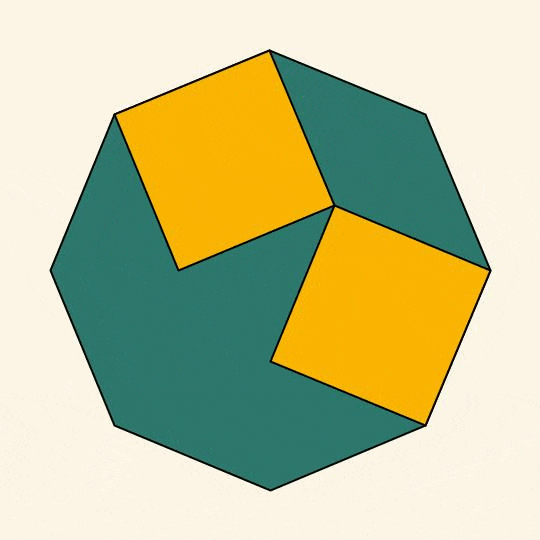
Now with rotations.
I made a gif not long ago (see below). Many of you expressed that it was "deeply uncomfortable" and "upsetting". I hope this new one will calm your feelings.
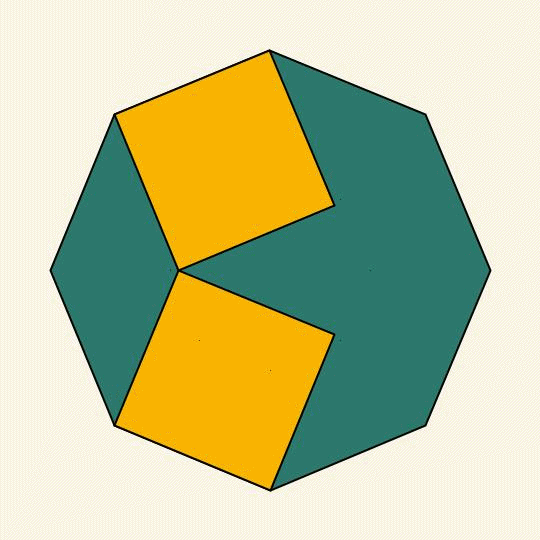
1K notes
·
View notes
Text

The Neurogeometry of Perception: A Journey into Geometric Cognition
In the realm of cognitive science and neurology, there exists a fascinating intersection where geometry meets perception, aptly termed “neurogeometry”. This interdisciplinary field seeks to understand how our brains process and interpret the visual world through geometric structures and patterns. Alessandro Sarti and Giovanna Citti, prominent figures in this domain, have extensively explored the fundamental principles of neurogeometry, uncovering the intricate relationship between the architecture of our brains and the geometric forms we perceive.
“Neurogeometry” is not merely a fusion of “neuroscience” and “geometry”. It’s an ambitious endeavor to model the functional architecture of the primary visual cortex and understand how geometric patterns underpin our visual processing. As described by Sarti and Citti,
“We remind some basic principles of the neurogeometrical approach as it has been proposed by various researchers to model the functional architecture of the primary visual cortex.”
This statement underscores the comprehensive nature of the approach and its foundational importance in cognitive science. The very essence of neurogeometry lies in its quest to unravel the architectural blueprint of our perceptual processes. Our brains, complex and intricate, are not just passive receivers of visual stimuli. Instead, they actively construct a coherent understanding of the world through geometric frameworks. Every curve we perceive, every angle we discern, and every spatial relationship we recognize is a testament to the brain’s inherent ability to process the world geometrically. Neurogeometry, therefore, serves as a bridge, connecting the abstract realm of geometric shapes and patterns to the tangible reality of neural processes.
Continue reading →
#geometry#geometrymatters#geometriccognition#cognitivegeometry#science#research#academia#study#perception#neurogeometry#lie group
87 notes
·
View notes
Text
In the growing field of geometric cognition, one name stands out due to her significant contributions: Elizabeth Spelke. A Professor of Psychology at Harvard University, Spelke is known for her pioneering work on the cognitive development of infants and children. Her research has provided fundamental insights into how young minds perceive and understand the world around them.
One of Spelke’s most influential research areas involves understanding how human beings, from infancy, comprehend the geometric properties of the world. This work has been instrumental in shaping the field of geometric cognition, a branch of cognitive science that studies how people understand, perceive, and reason about geometry and space.
Spelke and her collaborators have proposed a fascinating theory: that humans possess innate geometric abilities that emerge early in infancy and form the foundation of our understanding of the physical world. This suggests that geometry is not merely a mathematical concept taught in school but a universal mental construction inherent to the human brain.
In the “Geometry as a Universal Mental Construction,” chapter (from “Stanislas Dehaene & Elizabeth Brannon, Space, Time and Number in the Brain ) co-authored with Véronique Izard, Pierre Pica, Stanislas Dehaene, and Danielle Hinchey, Spelke delves deeper into this theory. They present compelling evidence supporting their idea, drawn from studies conducted across different cultures and age groups.
The team begins their exploration by discussing the broad concept of geometry and its universal presence. They state, “The study of geometry concerns the properties of space, as revealed through the shapes and relative positions of objects”. This statement indicates that geometry is not limited to academic contexts but is deeply interwoven with our day-to-day perception of the world.
The researchers argue that humans and many animal species share an intuitive understanding of basic geometric principles. This understanding guides their interactions with the environment and aids in navigation. Furthermore, this geometric intuition seems to be innate, surfacing in infancy long before formal education begins.
Continue Reading
39 notes
·
View notes
Text
Tatyana O. Sharpee’s work in the realm of geometric cognition—a field dedicated to understanding how the brain interprets and represents spatial information—has yielded groundbreaking insights into how our minds map the world around us. Continuing her previous argument for hyperbolic geometry in neural circuits, the recent paper, co-authored with Huanqiu Zhang, P. Dylan Rich, and Albert K. Lee, sheds light on the hyperbolic geometry of hippocampal spatial representations.
The hippocampus, a crucial part of the brain involved in memory and spatial navigation, houses ‘place cells’—neurons that fire when an animal is in a particular location. The geometry of these spatial representations, however, has remained largely unknown. Breaking new ground, Sharpee and her team reveal that the hippocampus does not represent space according to a linear geometry, as might be expected. Instead, they discovered a hyperbolic representation.
We investigated whether hyperbolic geometry underlies neural networks by analyzing the responses of sets of neurons from the dorsal CA1 region of the hippocampus. This region is considered essential for spatial representation and trajectory planning.
Imagine holding a map of your city. A linear representation would be akin to the map’s scale, where an inch on paper corresponds to a fixed number of miles in reality. A hyperbolic representation, in contrast, changes the scale depending on where you are on the map. The implications of this discovery are profound. A hyperbolic representation provides more positional information than a linear one, potentially aiding in complex navigation tasks.
This hyperbolic representation isn’t static—it dynamically expands with experience. As an animal spends more time exploring its environment, the spatial representations in its brain expand. The expansion is proportional to the logarithm of time spent exploring, suggesting our brains continually refine our spatial maps based on our experiences. As we spend more time in an area, our mental map of that area becomes more detailed and expansive. This dynamic updating could be crucial for efficiently navigating familiar environments.
Continue Reading
#geometriccognition#cognitivegeometry#geometry#geometrymatters#science#research#academia#neural#hyperbolic#study
31 notes
·
View notes
Text
For over a century, wave equations of physical systems have played a pivotal role in understanding diverse phenomena, ranging from Schrödinger’s model of the atom to the neural field theory of the brain. These mathematical representations predict that the expressed energy of a system is confined into natural modes or ‘eigenstates’, largely determined by the system’s geometry. The implication of these eigenstates transcends the realm of atomic structures, providing a theoretical framework that finds resonance in the dynamics of the human brain.
In a groundbreaking study by Pang et al. (2023), solutions to the Helmholtz equation applied on the cortical geometry have been shown to outperform competing approaches across a wide array of tasks and resting state fMRI data. This comes as a significant development, as the Helmholtz equation, originally formulated in the context of wave propagation and harmonics, finds a novel application in the realm of neuroscience. The promise it holds is to illuminate the complex structure and function of the brain through a fresh lens, one that emphasizes geometric constraints.
This paper shows that solutions of the Helmholtz equation on the cortical geometry outperform competing approaches across a diverse range of task & resting state fMRI data. — Michael Breakspear
Remarkably, the application of geometric modes is not confined to the cortical surface alone. They extend into subcortical structures, presenting a striking correspondence with patterns of subcortical functional connectivity. This uncovers a new facet of the brain’s functional network, suggesting that the geometric principles that govern cortical activity may also apply to deeper, subcortical regions. This is a potential game-changer for understanding the intricate dynamics of the human brain.
Continue Reading
#geometriccognition#cognitivegeometry#geometry#geometrymatters#research#science#academia#study#neural
36 notes
·
View notes
Text
The human brain is a complex organ responsible for various cognitive functions. Scientists from the University of Sydney and Fudan University have made a significant discovery regarding brain signals that traverse the outer layer of neural tissue and form spiral patterns. These spirals, observed during both resting and cognitive states, have been found to play a crucial role in organizing brain activity and cognitive processing.
The research study, published in Nature Human Behaviour, focuses on the identification and analysis of spiral-shaped brain signals and their implications for understanding brain dynamics and functions. The study utilized functional magnetic resonance imaging (fMRI) brain scans of 100 young adults to observe and analyze these brain signals. By adapting methods used in understanding complex wave patterns in turbulence, the researchers successfully identified and characterized the spiral patterns observed on the cortex.
Our study suggests that gaining insights into how the spirals are related to cognitive processing could significantly enhance our understanding of the dynamics and functions of the brain. —Associate Professor Pulin Gong
Continue reading
#geometriccognition#cognitivegeometry#geometry#geometrymatters#research#science#academia#neural#study
44 notes
·
View notes
Photo



Borobudur Temple, Central Java, Indonesia
References: Google Maps, Borobudur was Built Algorithmically by Hokky Situngkir (Dept. Computational Sociology, Bandung Fe Institute Center for Complexity, Surya University)
“The mathematical study for Borobudur’s architectural design has once related to answer the question about the metric system used by ancient Javanese to build such giant buildings with good measurement. While the anthropological revealed that Javanese used tala system (metric system with length measurement defined as the length of a human face from the forehead’s hairline to the tip of the chin or the distance from the tip of the thumb to the tip of the middle finger when both fingers are stretched at their maximum distance), the survey as elaborated in Atmadi (1988) showed there is a ratio used between parts of Borobudur. There is part of Head : Body: Foot (9 : 6 : 4) that is met in horizontal and vertical measurement of the temple.”
—Hokky Situngkir, Borobudur was Built Algorithmically
181 notes
·
View notes
Photo

Eggcase of Argonauta nodosa, showing the derived double keel of the genus (via Wikipedia)
2K notes
·
View notes
Text

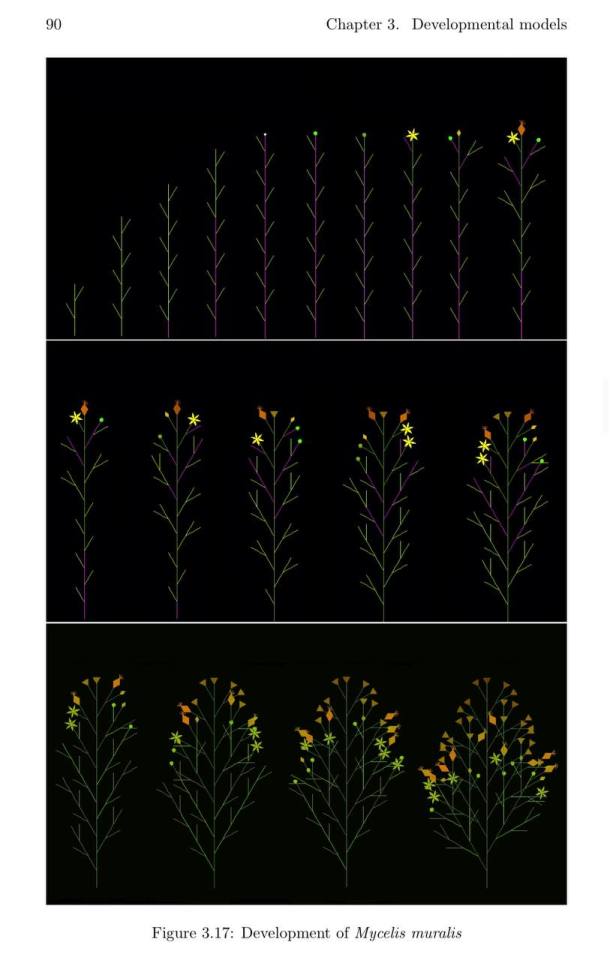
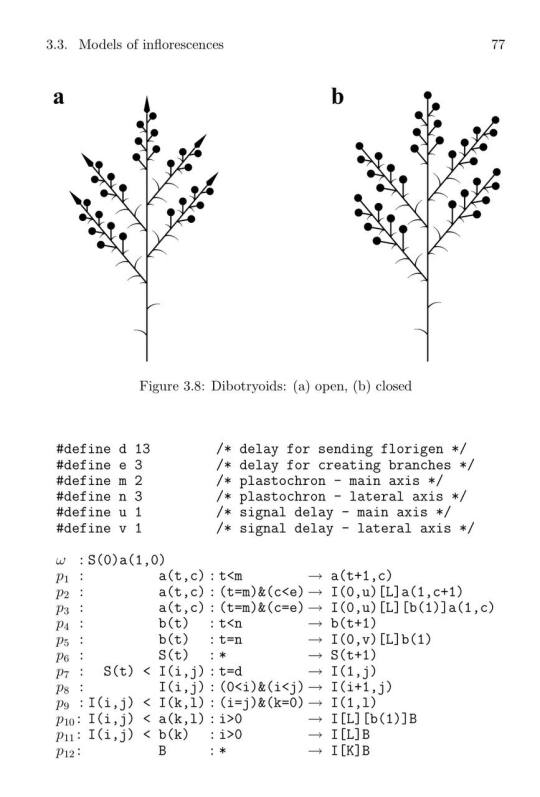
The Algorithmic Beauty of Plants, Aristid Lindenmayer and Przemysław Prusinkiewicz.
You can freely read it here.
7K notes
·
View notes
Link
In her 2019 review, Tatyana O Sharpee connects several lines of research to argue that hyperbolic geometry should be broadly applicable to neural circuits as well as other biological circuits. Networks with hyperbolic geometry are most sensitive to both internal and external disturbances, which explains why. Moreover, these networks enable effective communication whether nodes are added or withdrawn.
The well-known Zipf’s rule, which is also commonly referred to as the Pareto distribution and asserts that the likelihood of observing a certain pattern is inversely linked to its rank, is another characteristic of hyperbolic geometry, according to the author. Several biological systems, including protein sequences, brain networks, and economics, exhibit Zipf’s law. These discoveries give more evidence for the universality of networks having an underlying hyperbolic metric structure.
A three-dimensional hyperbolic space is relevant for neuronal signaling, according to recent discoveries in neuroscience. Compared to other dimensions, the three-dimensional hyperbolic space could offer more resilience. The paper provides an example of how the olfactory system’s new topographic arrangement was discovered using hyperbolic coordinates. The adoption of such coordinates could make it easier for pertinent signals to be represented elsewhere in the brain.
The link between hyperbolic geometry, Zipf’ law and maximally informative representations clarifies why hyperbolic geometry is simultaneously relevant for both the olfactory system and word distribution. In the case of olfaction, plants and animals have to produce chemical signals that will be discernible by other animals. — Tatyana O. Sharpee
Continue Reading
#geometry#geometrymatters#geometriccognition#cognitivegeometry#research#academia#study#paper#science#hyperbolic#neural
34 notes
·
View notes
Text
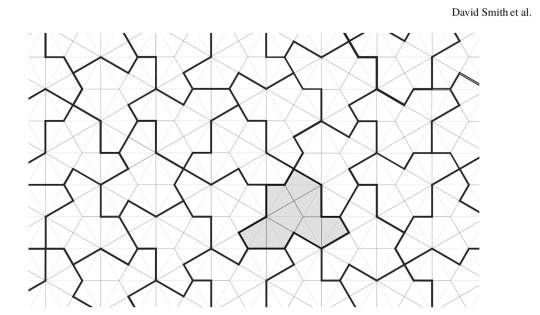
Aperiodic Monotile
Super big news from this lot. (ArXiv)

A monotile that admits no periodic tilings, but uncountably many aperiodic tilings. WOW.
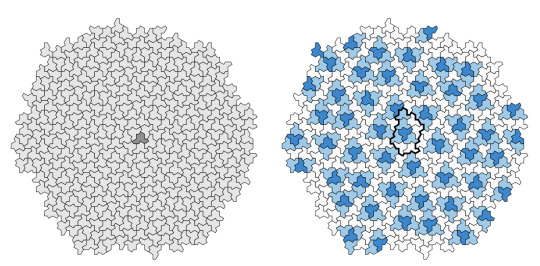

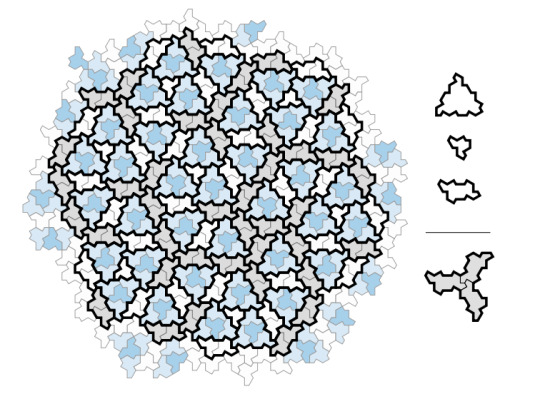


And they're calling it the Hat.
And Craig announced it with an animation!
youtube
159 notes
·
View notes
Video
The Polynons
: cognitive dimensions for systems of knowledge
: geometric models are particularly useful because they allow the analysis of complex data from any kind of environment, by leveraging the power of geometry, mathematics, machine learning and much more.
↓
www.polynons.com
#polynons#geometrymatters#geometry#cognition#cognitivegeometry#geometriccognition#information#data#knowledge#mind#theory#research#study blog#scien
24 notes
·
View notes
Link



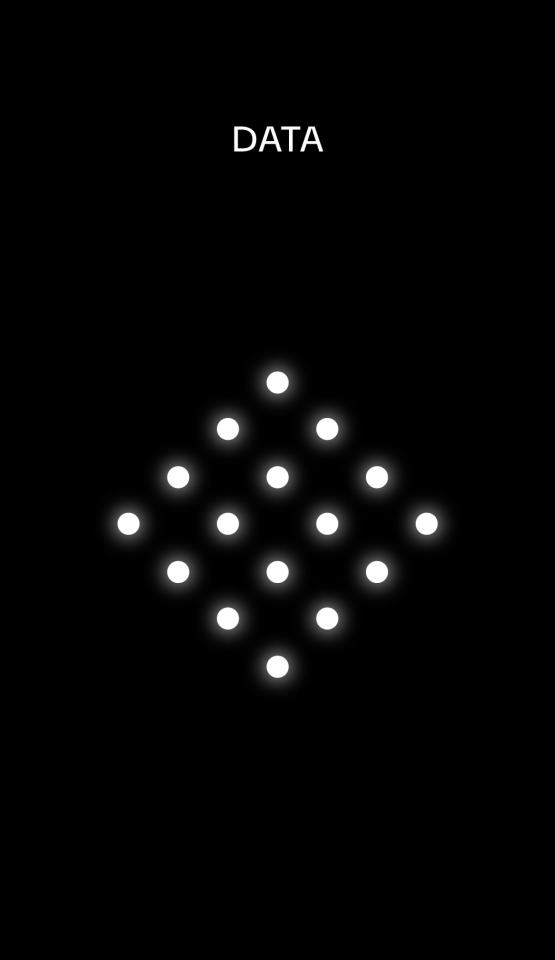

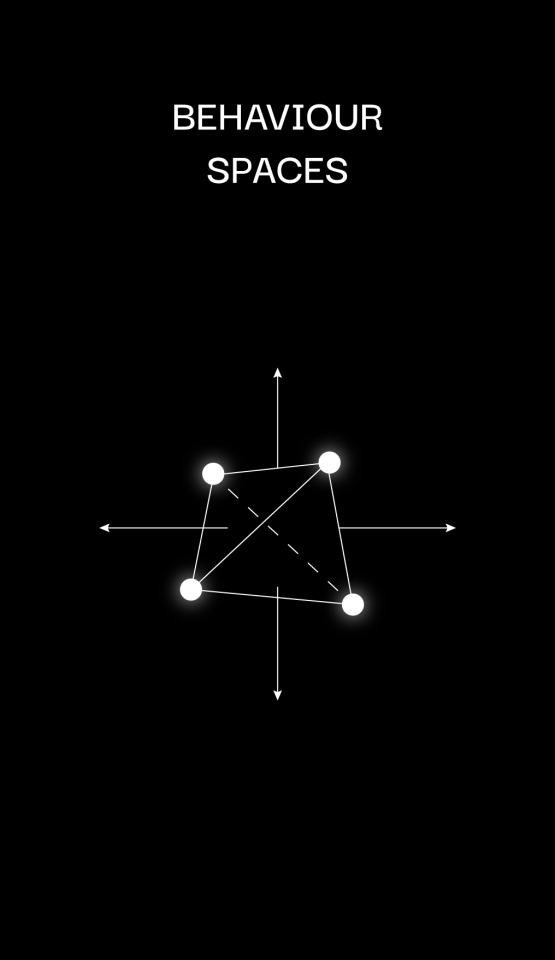
The Polynons
— One theory. Infinite models.
: A POLYNON
is a conceptual geometric entity that provides a measurement for conscious observations and experience. By dealing with a state of pre-geometry (the structure from which the geometry of acertain system develops), the proposed framework enables the advancement of human knowledge into a new era.
: A GEOMETRIC FRAMEWORK
is a set of rules, guidelines, and relationships, used to describe and analyze a set or multiple sets of data. The source of this data can be mathematics, physics, engineering, academia, or any kind of
discipline.
: A GEOMETRIC FRAMEWORK FOR COGNITION
analyzes data from cognitive mediums creating a structured environment for new dimensions of relations, emotions, actions, experiences, and behavior. By providing a new way to conceptualize and understand knowledge, this geometric model allows for a more holistic view of the underlying structures and dynamics of cognitive systems. It also provides a new type of architecture for information, a platform for developing new algorithms and models that can better capture unstructured data, better understand the behavior of complex systems, and, in the end, lead to more powerful and effective technologies, data science techniques, and scientific research.
: MEASURING THE SENSE-DATA
"Consciousness is the only fact that we can study directly since all other objects of knowledge must be perceived through consciousness." (B. Betts, 1887), therefore considering memory, perception, and the sensory systems as sources for the proposed framework, will reveal a more detailed structure of the objective reality. Furthermore, the definition of phenomena will rely on richer geometries, built on cognitive dimensions by introducing a new layer of data in any database, a layer derived from cognitive patterns, conscious experience, and relational behavior.
: NEW METRICS
This new type of architecture of information, built on a geometric cognition layer, maps the road from unstructured data to experience, creating new metrics for intent, motivation, and decision. Furthermore, understanding the causality of intent increases the number of choices that the system provides via clear mechanisms of cognitive behavior. Furthermore, the collective properties of systems can be directly derived from the topological relationships between the geometric constructs of the mind coupled with those of the phenomena on which the mind acts upon.
→ The Polynons: a geometric framework for cognition
#polynons#geometrymatters#geometry#cognition#geometriccognition#cognitivegeometry#data#knowledge#information#mind#theory#science#academia#research#study
21 notes
·
View notes
Link
The effect of the shapes we perceive is well-known and utilized in various domains. For example, the Bouba/Kiki effect is an effect that allows cartoon or animation characters to be designed with specific emotional attributes. The question of whether individuals consistently ascribed emotions to static forms is based on the appearance of dynamic forces between these forms. Irena Pavlova, Arseny Sokolov, and Alexander Sokolov conducted research on emotions and dynamics in single forms in 2005.
They asked participants to assess triangles, ovals, and lines for the feelings they suggested after displaying them in various orientations. Participants rated the strength of the basic emotions that may be associated with the figures after initially estimating the instability of geometric forms rotated in 15-degree steps in the visual plane. They discovered no conclusive connection between perceived instability and the figures’ deviation from the vertical alignment. Negative feelings and perceived instability were found to have a substantial positive association regardless of form. Positive feelings, on the other hand, were inversely related to the figure’s divergence from the vertical alignment.
Continue Reading
#geometry#geometrymatters#geometriccognition#cognitivegeometry#information#knowledge#perception#mind#emotion#psychology#science#study#research
13 notes
·
View notes
Link
Although consciousness is a multifaceted phenomena, important aspects like awareness and alertness have only been theoretically rather than neurobiologically defined. According to a novel theory, different neurofunctional dimensions of the brain contain aspects of consciousness that may be detected and measured by variations in blood flow across time.
“Consciousness is complex and studying it is like solving a scrambled Rubik’s cube,” [..] “If you look at just a single surface, you may be confused by the way it is organized. You need to work on the puzzle looking at all dimensions.” — Zirui Huang, Ph.D., research assistant professor in the University of Michigan Medical School Department of Anesthesiology.
Some examples of these dimensions when it comes to consciousness include arousability, or the brain’s capacity to be awake, awareness, or what we actually experience—such as the color of a rose—and sensory organization, or how sights, sounds, and feelings come to be woven together to create our seamless conscious experience.
The researchers looked for such dimensions of the mind in the brain’s geometry. They looked at the topology or gradients across brain areas rather than at discrete brain regions. The scientists used fMRI data from study participants who were awake, anesthetized, in a sort of coma, or who had mental illnesses like schizophrenia to construct a map of these so-called cortical gradients of awareness.
Continue Reading
#geometry#geometrymatters#geometriccognition#cognitivegeometry#cognition#information#knowledge#mind#brain#dimension#consciousness#phenomena#science#study#research
30 notes
·
View notes
Link
For neuroscientists studying complex systems, patterns exhibit valuable data that may or may not correspond to higher levels of cognitive processes. Tyler Millhouse proposes a criterion evaluating just how real a pattern is likely to be, improving a SFI External Professor Daniel Dennett’s 1991 explanation, which utilized ‘compressibility’ to determine how genuine a pattern is likely to be. Dennett characterized genuine patterns by whether complicated scientific data can be properly represented by smaller scientific models, and just how extremely detailed pictures may be compressed into JPEG files that capture the important elements of the original image. Millhouse further argues that the more complex the interpretation required, the less real the pattern is likely to be.
My aim is to argue for a new and more demanding criterion for the reality of patterns. This criterion is inspired by real patterns, both in its original form and in later interpretations, but it also builds on algorithmic information theory and on similarity criteria of model fidelity.
To understand how Dennett makes philosophical use of the connection between regularity and compression, it is worth revisiting one of his central examples—image compression. The presence of a pattern in data is a matter of degree, a philosophical insight that is exemplified by the checkerboard compression test.
Continue Reading
#geometry#geometrymatters#geometriccognition#cognitivegeometry#cognition#information#knowledge#pattern#perception#study#research#science#academic
34 notes
·
View notes